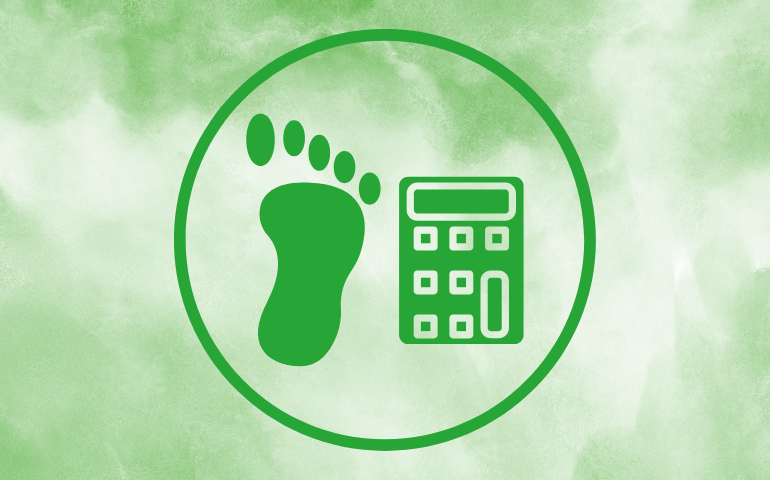Blogs:
Post 1:

What is a Carbon Footprint and How Is It Measured?
Understanding Your Environmental Impact
A carbon footprint refers to the total amount of greenhouse
gases—primarily carbon dioxide—released into the atmosphere as a
result of human activities. Everything from driving a car, using
electricity, cooking food, or even purchasing goods contributes to
it. These emissions are usually measured in equivalent tons of CO₂
(CO₂e). But how is it measured? Scientists and calculators use
lifecycle assessments to analyze emissions across different
activities or products—from production to usage and disposal. By
tracking emissions from transportation, energy use, waste, and
consumption habits, individuals and households can understand and
reduce their carbon footprint. It's a small step with a huge
environmental impact.
Post 2:

What is a Carbon Calculator and How Does It Work?
Understand Your Environmental Impact
A carbon calculator is a digital tool designed to estimate the amount of carbon dioxide (CO₂) emissions
generated by your everyday activities. It works by analyzing inputs like electricity usage, fuel consumption,
travel habits, diet choices, and waste generation. Each of these activities contributes to your carbon
footprint—the total greenhouse gas emissions you're responsible for.
Our carbon calculator simplifies this complex data into an easy-to-use interface. Just enter your daily or
weekly habits—such as how many kilometers you drive, how often you use air conditioning, or how much meat you
consume—and the calculator uses scientific emission factors to give you an accurate footprint in kilograms or
tons of CO₂.
With this data, you can identify high-impact areas and take meaningful actions to reduce your emissions.
Whether you're trying to go green at home, travel smarter, or shift to a more sustainable lifestyle, the
carbon calculator is your first step toward a cleaner planet.
Post 3:

Why Lowering CO₂ Emissions Matters for Our Planet
Every Action Counts Toward a Cleaner Future
Carbon dioxide (CO₂) is one of the primary greenhouse gases contributing to global warming and climate change.
As our planet warms due to excess emissions from vehicles, industries, electricity generation, and even
agriculture, we face rising sea levels, extreme weather, and ecosystem disruption. Lowering CO₂ emissions
isn’t just an environmental goal—it’s a necessity for protecting human health, biodiversity, and the stability
of our planet.
Reducing emissions means shifting to renewable energy, conserving resources, improving efficiency, and
adopting sustainable habits in daily life. Small lifestyle changes—like using public transportation, switching
to LED bulbs, or minimizing waste—can lead to significant long-term impact when adopted at scale.
Our mission with CarbonCount is to make this journey easier. By measuring your household’s carbon output and
showing where the biggest emissions come from, our tool empowers you to take control and make informed
choices. Because when we all act, even in small ways, the collective outcome is powerful: a healthier, safer,
and more sustainable planet for everyone.
Post 4:

🌍 How to Reduce Your Household’s Carbon Footprint
Reducing your carbon footprint doesn't mean completely changing your lifestyle overnight. It’s about making
smarter, greener choices in your daily routine. When every household takes small steps, the collective impact
on the planet is massive.
Here are some effective ways to cut down your household’s carbon emissions:
✅ Save Energy at Home – Switch to LED bulbs, unplug devices when not in use, and use energy-efficient
appliances.
✅ Switch to Renewable Sources – If possible, use solar panels or choose a green electricity
provider.
✅ Reduce Water Usage – Fix leaks, install low-flow taps, and be mindful of water consumption while
bathing or washing.
✅ Cut Down on Waste – Recycle properly, compost food scraps, and avoid single-use plastics.
✅ Change Travel Habits – Walk, cycle, carpool, or use public transport instead of driving alone.
✅ Eat Sustainably – Reduce meat consumption, support local farmers, and avoid processed foods with high
environmental costs.
✅ Shop Smart – Buy durable goods, repair instead of replace, and support eco-conscious brands.
These steps not only reduce emissions but also often lead to cost savings and a healthier lifestyle. Tools
like our CarbonCount calculator help you identify which of these actions will have the most impact for
your specific household.
Start small, stay consistent, and inspire others around you—because climate action begins at home.
